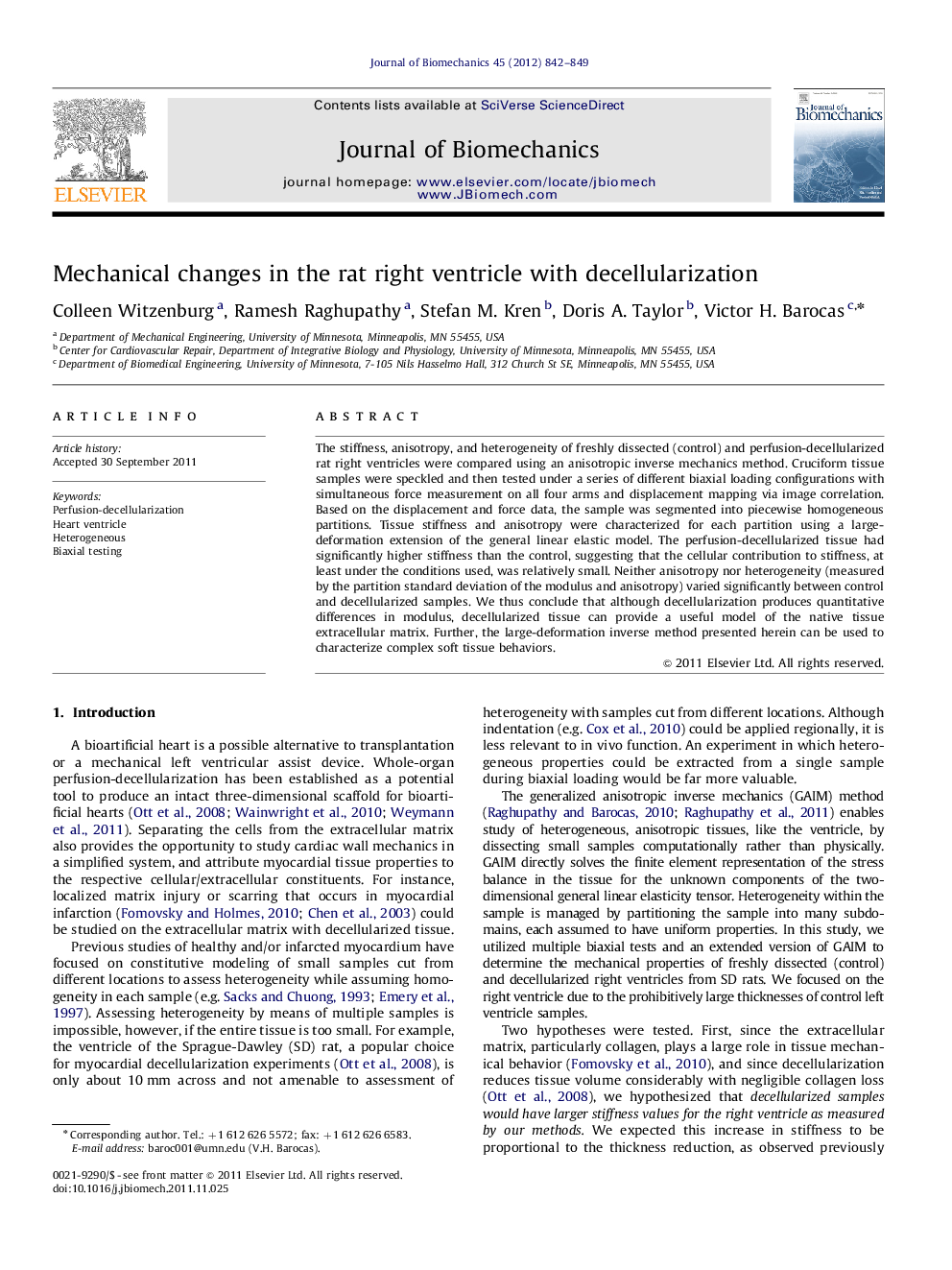| Article ID | Journal | Published Year | Pages | File Type |
|---|---|---|---|---|
| 10432383 | Journal of Biomechanics | 2012 | 8 Pages |
Abstract
The stiffness, anisotropy, and heterogeneity of freshly dissected (control) and perfusion-decellularized rat right ventricles were compared using an anisotropic inverse mechanics method. Cruciform tissue samples were speckled and then tested under a series of different biaxial loading configurations with simultaneous force measurement on all four arms and displacement mapping via image correlation. Based on the displacement and force data, the sample was segmented into piecewise homogeneous partitions. Tissue stiffness and anisotropy were characterized for each partition using a large-deformation extension of the general linear elastic model. The perfusion-decellularized tissue had significantly higher stiffness than the control, suggesting that the cellular contribution to stiffness, at least under the conditions used, was relatively small. Neither anisotropy nor heterogeneity (measured by the partition standard deviation of the modulus and anisotropy) varied significantly between control and decellularized samples. We thus conclude that although decellularization produces quantitative differences in modulus, decellularized tissue can provide a useful model of the native tissue extracellular matrix. Further, the large-deformation inverse method presented herein can be used to characterize complex soft tissue behaviors.
Related Topics
Physical Sciences and Engineering
Engineering
Biomedical Engineering
Authors
Colleen Witzenburg, Ramesh Raghupathy, Stefan M. Kren, Doris A. Taylor, Victor H. Barocas,
